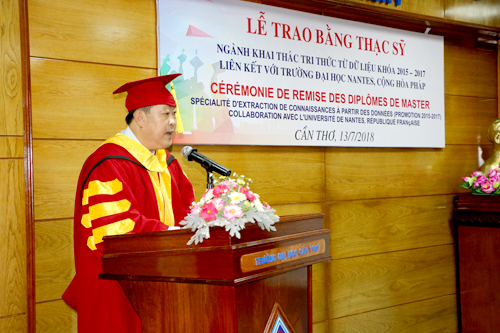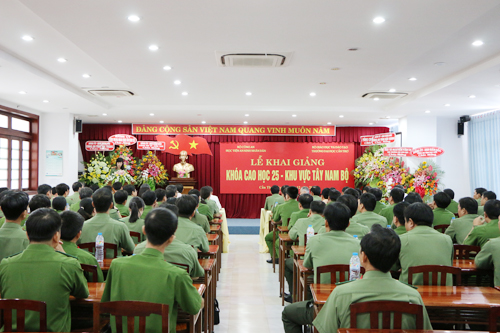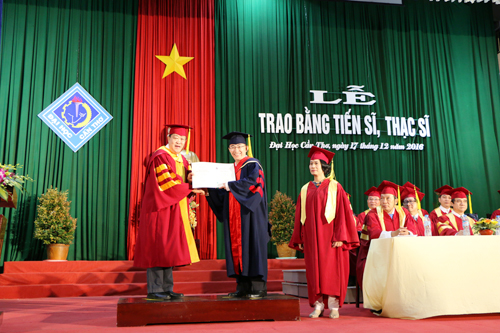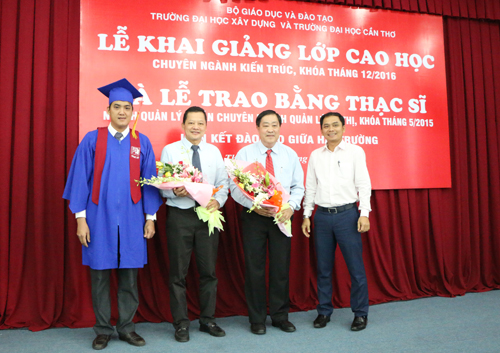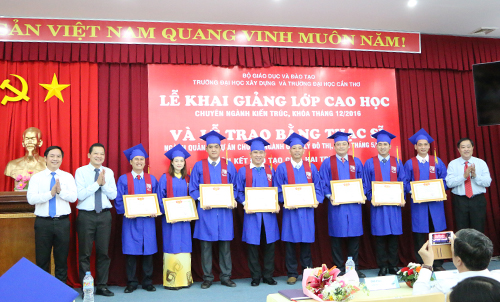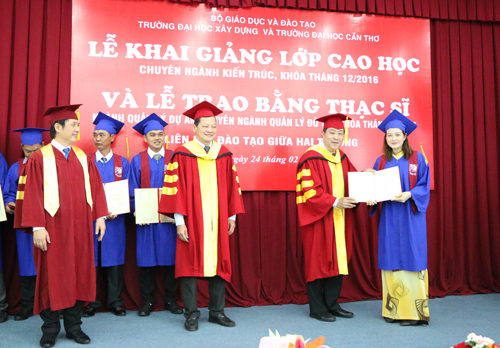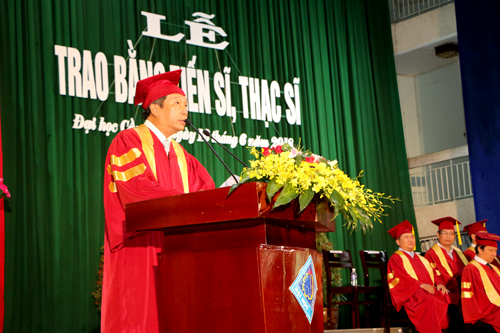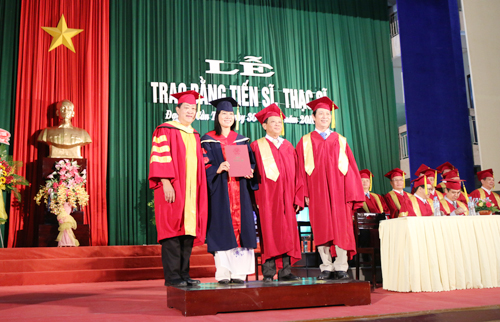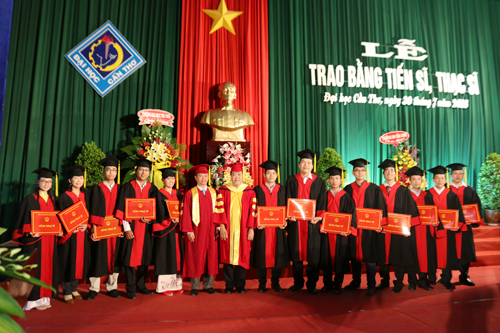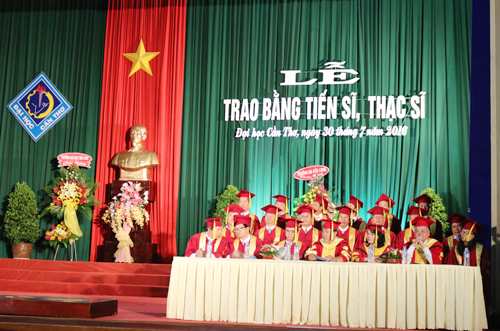
 Tên đề tài: “Ảnh hưởng của các dạng lập địa và chế độ triều lên khả năng tích lũy cacbon của rừng ngập mặn tại tỉnh Cà Mau”.
Tên đề tài: “Ảnh hưởng của các dạng lập địa và chế độ triều lên khả năng tích lũy cacbon của rừng ngập mặn tại tỉnh Cà Mau”.
 Tác giả: Nguyễn Hà Quốc Tín, Khóa: 2011
Tác giả: Nguyễn Hà Quốc Tín, Khóa: 2011
 Chuyên ngành: Môi trường đất và nước, Mã số: 9440303. Nhóm ngành: Khoa học tự nhiên.
Chuyên ngành: Môi trường đất và nước, Mã số: 9440303. Nhóm ngành: Khoa học tự nhiên.
 Người hướng dẫn chính: PGS.TS. Lê Tấn Lợi - Trường Đại học Cần Thơ.
Người hướng dẫn chính: PGS.TS. Lê Tấn Lợi - Trường Đại học Cần Thơ.
- 1. Tóm tắt nội dung luận án
Rừng ngập mặn đóng vai trò quan trọng trong việc tích lũy cacbon. Tuy nhiên, việc phá rừng ngập mặn trên thế giới cũng như ở Việt Nam và ĐBSCL đang diễn ra nghiêm trọng. Vấn đề này làm tăng việc phát thải khí CO2 do suy thoái và mất rừng và làm biến đổi khí hậu. Mặt khác, sự tồn tại và phân bố của cây rừng ngập mặn phụ thuộc vào một số những yếu tố môi trường đất và nước. Luận án nghiên cứu ảnh hưởng của các dạng lập địa và chế độ triều lên khả năng tích lũy cacbon của rừng ngập mặn tại tỉnh Cà Mau. Luận án tập trung vào (i) khảo sát các yếu tố môi trường đặc trưng của các dạng lập địa như: cao trình mặt đất, tần số ngập và độ sâu ngập triều, độ mặn của nước trong đất, pH, Eh, dung trọng và hàm lượng chất hữu cơ, (ii) khảo sát và đánh giá sinh khối và khả năng tích lũy cacbon của rừng ngập mặn tại các dạng lập địa và (iii) xác định ảnh hưởng của các yếu tố môi trường đặc trưng của các dạng lập địa và chế độ triều đến khả năng tích lũy cacbon của rừng ngập mặn tại cửa sông Vàm Lũng và cửa sông Ông Trang, huyện Ngọc Hiển tỉnh Cà Mau.
Kết quả nghiên cứu tại Vàm Lũng cho thấy lập địa ven sông có cao trình mặt đất thấp nhất, kế đó là lập địa cửa sông và cao nhất là lập địa ven biển nên lập địa ven sông có số lần ngập/năm và ĐSN cao nhất, kế đến là lập địa cửa sông và thấp nhất là lập địa ven biển. Giá trị độ mặn nước trong đất, pH và Eh trong đất cao nhất ở lập địa ven biển, kế đến là lập địa cửa sông và thấp nhất lập địa ven sông. Dung trọng đất cao nhất tại lập địa ven biển, tiếp theo là lập địa ven sông và thấp nhất tại lập địa cửa sông. CHC trong đất cao nhất tại lập địa cửa sông, kế đến là lập địa ven sông và thấp nhất tại lập địa ven biển. Tích lũy C trên cây đứng tại dạng lập địa ven biển thấp nhất, kế đến là lập địa ven sông và cao nhất tại lập địa cửa sông. Không có sự khác biệt thống kê về tích lũy C trong vật rụng, trong đất và trong rễ giữa các dạng lập địa. Phân tích tương quan mối quan hệ giữa các yếu tố môi trường đất và nước với tích lũy cacbon cho kết quả tại lập địa ven biển có tích lũy C trong đất, rễ cây đứng, vật rụng và cây đứng chịu tác động chủ yếu của pH đất; Eh đất và dung trọng. Riêng tích lũy C trong đất và vật rụng chịu ảnh hưởng của TSN và ĐSN. Bên cạnh đó, Tích lũy C trong đất còn chịu ảnh hưởng của hàm lượng CHC. Tại lập địa cửa sông, tích lũy C trong đất chịu tác động của các yếu tố lý hóa đất là pH đất và dung trọng. Tích lũy C cây đứng và rễ cây đứng chịu tác động của dung trọng và CHC. Tích lũy C vật rụng chịu tác động của TSN, ĐSN; pH đất, độ mặn của nước trong đất và Eh đất. Tại lập địa ven sông, tích lũy C trong đất, cây đứng và rễ cây đứng chịu tác động của độ mặn của nước trong đất. Tích lũy C cây đứng, vật rụng và rễ cây đứng chịu tác động của ĐSN. Tích lũy C cây đứng và rễ cây đứng cùng chịu tác động của Eh đất. Tích lũy C vật rụng còn chịu thêm tác động của CHC đất. Phân tích hồi quy đa biến mối tương quan giữa yếu tố lý hóa đất và tích lũy cacbon trong đất, cây đứng, vật rụng và rễ cây đứng ở rừng ngập mặn Vàm Lũng chỉ cho kết quả phương trình hồi quy đa biến được dự đoán mối tương quan giữa yếu tố lý hóa đất và tích lũy cacbon đất.
Nghiên cứu tại Cồn Ông Trang, lập địa cuối cồn có cao trình thấp nhất, kế đó là lập địa giữa cồn và ở đầu cồn là cao nhất. Đối với ĐSN cao nhất là ở cuối cồn, kế đến là lập địa giữa cồn và thấp nhất là lập địa đầu cồn, còn đối với TSN thì ngược lại. Giá trị pH đất cao nhất tại lập địa giữa cồn, kế tiếp là lập địa cuối cồn và thấp nhất tại lập địa đầu cồn. Giá trị Eh, độ mặn và hàm lượng CHC của đất không có sự khác biệt giữa các dạng lập địa. Dung trọng đất cao nhất tại lập địa đầu cồn, tiếp theo là lập địa giữa cồn và thấp nhất tại lập địa cuối cồn. Tích lũy C trong đất tại lập địa đầu cồn cao nhất khác biệt thống kê lập địa giữa cồn và lập địa cuối cồn. Tích lũy C trong vật rụng, cây đứng và rễ cây không có sự khác biệt giữa các dạng lập địa. Phân tích tương quan mối quan hệ giữa các yếu tố môi trường đất và nước với tích lũy cacbon cho kết quả tại lập địa đầu cồn, tích lũy C trong đất, cây đứng và rễ cây đứng chịu tác động bởi Eh đất và CHC trong đất. Ngoài ra, tích lũy C trong đất còn chịu tác động của pH đất và dung trọng đất. Tích lũy C vật rụng chịu tác động của TSN và ĐSN. Tại lập địa giữa cồn, tích lũy C trong đất chịu tác động của pH đất và Eh đất. Tích lũy C vật rụng chịu tác động bởi Eh đất và độ mặn của nước trong đất. Tích lũy C rễ cây đứng chịu tác động bởi pH và dung trọng. Tích lũy C cây đứng có mối quan hệ nhưng chưa chịu tác động bởi các yếu tố lý hóa đất. Tại lập địa cuối cồn, tích lũy C trong đất, cây đứng và rễ cây đứng chịu tác động của pH đất; dung trọng đất. Tích lũy C trong đất còn chịu ảnh hưởng của ĐSN. Tích lũy C vật rụng chịu tác động của TSN. Phân tích hồi quy đa biến mối tương quan giữa yếu tố lý hóa đất và tích lũy cacbon trong đất, cây đứng, vật rụng và rễ cây đứng ở rừng ngập mặn Cồn Ông Trang chỉ cho kết quả phương trình hồi quy đa biến được dự đoán mối tương quan giữa yếu tố lý hóa đất và tích lũy cacbon đất.
- 2. Những kết quả mới của luận án:
Kết quả nghiên cứu tại Vàm Lũng cho thấy tổng tích lũy cacbon rừng ngập mặn bao gồm tích lũy cacbon cây đứng, rễ, vật rụng và trong đất. Hàm lượng cacbon tổng cao nhất lập địa ven sông kế đến là lập địa cửa sông và thấp nhất là lập địa ven biển. Phân tích hồi quy đa biến mối tương quan giữa yếu tố lý hóa đất và tích lũy cacbon trong đất, cây đứng, vật rụng và rễ cây đứng ở rừng ngập mặn Vàm Lũng chỉ cho kết quả phương trình hồi quy đa biến được dự đoán mối tương quan giữa yếu tố lý hóa đất và tích lũy cacbon đất.
Nghiên cứu tại Cồn Ông Trang cho thấy cacbon tổng ở ba dạng lập địa bao gồm tích lũy cacbon cây đứng, rễ, vật rụng và trong đất với giá trị cao nhất ở lập địa cuối cồn kế đến là lập địa đầu cồn và thấp nhất là lập địa giữa cồn. Phân tích hồi quy đa biến mối tương quan giữa yếu tố lý hóa đất và tích lũy cacbon trong đất, cây đứng, vật rụng và rễ cây đứng ở rừng ngập mặn Cồn Ông Trang chỉ cho kết quả phương trình hồi quy đa biến được dự đoán mối tương quan giữa yếu tố lý hóa đất và tích lũy cacbon đất.
- 3. Các ứng dụng/khả năng ứng dụng trong thực tiễn, vấn đề cần tiếp tục nghiên cứu:
Cacbon tích lũy của rừng ngập mặn bao gồm tích lũy cacbon cây đứng, rễ, vật rụng và trong đất. Phân tích hồi quy đa biến mối tương quan giữa yếu tố lý hóa đất và tích lũy cacbon trong đất, cây đứng, vật rụng và rễ cây đứng ở rừng ngập mặn Vàm Lũng và cồn Ông Trang chỉ cho kết quả phương trình hồi quy đa biến được dự đoán mối tương quan giữa yếu tố lý hóa đất và tích lũy cacbon đất.
Cần có nghiên cứu xác định phát thải cacbon của rừng ngập mặn để tính toán chính xác khả năng tích lũy cacbon.
Có thêm nghiên cứu để đánh giá khả năng tích lũy cacbon của rừng ngập mặn theo thời gian để làm cơ sở chi trả dịch vụ môi trường.
1. Summary
Mangroves play an important role in carbon capture. However, the destruction of mangroves in the world as well as in Vietnam and the Mekong Delta is taking place seriously. This problem increases CO2 emissions from degradation and deforestation and changes climate. On the other hand, the existence and distribution of mangroves depend on a number of soil and water environment factors. The thesis studied the effects of topography types and tide regimes on the carbon (C) accumulation of mangroves in Ca Mau province. The dissertation studied to measure (i) elevation, depth and frequency of inundation, and soil pH, Eh, salinity of soil water, density, organic matter content in soil; (ii) the diameter at breast height (DBH1,3), collect soil samples and downed deadwood to calculate carbon accumulation, and (iii) evaluate the influence of tide regimes and physicochemical properties of soil on carbon accumulation of mangroves at Vam Lung and Ong Trang estuary, Ngoc Hien district, Ca Mau province.
The research results at Vam Lung showed that the riverine topography had the lowest elevation, followed by the estuarine and the highest is the fringe topography so the riverine location had the highest number of inundation/year and the depth inundation, followed by estuarine and the lowest is the fringe topography. The value of salinity of soil water, pH, and Eh were the highest at the fringe topography, followed by the estuarine topography and the lowest at the riverine topography. The soil density was the highest in the fringe topography, followed by the riverine and lowest at the estuarine topography. The organic matter in the soil was the highest at estuarine topography, followed by the riverine and the lowest at the fringe topography. C accumulation on standing trees was the lowest in the fringe, followed by the riverine and the highest at riverine topography. C accumulation in downed deadwood, soil and roots was not statistically diferent in three topography types. Results of correlation analysis between the soil and water environmental factors and the accumulation of carbon in the soil at the fringe topography, C accumulation in soil, roots of standing trees, downed deadwood and standing trees was affected by soil pH, soil Eh and soil density. The C accumulation in soil and downed deadwood was affected by inundation frequency and depth. In additon, C accumulation in soil was affected by soil organic matter. At estuary topography, C accumulation in soil affected by soil physical and chemical factors was pH of soil and density. Accumulation of standing trees and roots of standing tress was influenced by soil density and organic matter. C accumulation of downed deadwood was affected by the inundation frequency and depth; soil pH; salinity of soil water and soil Eh. At the riverine topography, C accumulation in soil, standing trees and roots of standing trees affected by soil physical and chemical factors was the salinity of soil water. C accumulation of roots of standing trees, downed deadwood and standing trees was affected by inundation depth. C accumulation of roots of standing trees and standing trees was affected by soil Eh. C accumulation of downed deadwood was also affected by soil organic matter. The multivariate regression analysis of the correlation between factors of chemical and physical of soil and C accumulation in soil, standing trees, downed deadwood and standing tree roots in Vam Lung mangrove forests only showed the multivariable regression which predicted the correlation between soil physical and chemical factors and soil C accumulation.
The results research at Ong Trang islet showed that the tip of islet topography had the lowest elevation, followed by the middle of islet and the highest is the top of Ong Trang islet topography so the tip of islet topography had the highest number of inundation/year and the depth inundation, followed by middle of islet topography and the lowest is the top of islet topography. The pH value was the highest at the middle of islet, followed by the tip of islet and the lowest at the top of islet topography. The Eh, salinity of soil water, and organic matter in soil value were not different at three sites in Ong Trang islet. The soil density was the highest in the top of islet topography, followed by the middle of islet and lowest at the tip of islet topography. The accumulation in soil was the highest and statistically diferent in the top of islet topography, followed by the middle of islet and lowest at the tip of islet topography. C accumulation in litter fall, standing and root trees was not different in three topography types at Ong Trang islet. Results of the correlation analysis between the soil and water environmental factors and the accumulation of carbon showed that at the top of the islet, C accumulation in the soil, standing trees and roots of standing trees was affected by the soil Eh and organic matter. Besides, C accumulation of soil was affected by soil pH and density. C accumulation of downed deadwood was related but negatively impacted by soil physical and chemical factors but affected by inundation frequency and depth. In the middle of the islet topography, C accumulation in soil affected by soil physical and chemical factors was soil pH and Eh. C accumulation of downed deadwood affected by soil physical and chemical factors was Eh and salinity of soil water. Accumulation of C roots affected by soil physical and chemical factors was pH and density. C accumulation of standing trees had a relationship but was not affected by soil physical and chemical factors. At the end of the islet, C accumulation in soil, standing trees and roots of standing trees was affected by soil pH and density. C accumulation in soil was affected by inundation depth. Accumulation of downed deadwood was efftected by inundation frequency. The multivariate regression analysis of the correlation between factors of chemnical and physical of soil and C accumulation in soil, standing trees, downed deadwood and standing tree roots in Ong Trang mangrove forests only showed the multivariable regression which predicted the correlation between soil physical and chemical factors and soil C accumulation.
- The novel aspects from the thesis
The results research at Vam Lung showed that carbon accumulation of mangrove included carbon accumulation of standing trees, downed deadwood, roots, and soils. The total carbon accumulation was the highest at the riverine, followed by the estuarine and the lowest was the fringe topography. The multivariate regression analysis of the correlation between physicochemical factors of soil and C accumulation in soil, standing trees, downed deadwood and standing tree roots in Vam Lung islet mangrove forests only showed the multivariable regression which predicted the correlation between soil physical and chemical factors and soil C accumulation.
The results research at Ong Trang islet showed that carbon accumulation of mangrove included carbon accumulation of standing trees, downed deadwood, roots, and soils. The total carbon accumulation was the highest at the tip islet, followed by the top islet and the lowest was the middle of islet topography. The multivariate regression analysis of the correlation between physicochemical factors of soil and C accumulation in soil, standing trees, downed deadwood and standing tree roots in mangrove forests only showed the multivariable regression which predicted the correlation between soil physical and chemical factors and soil C accumulation.
- Application prospect and suggestions for further study
Carbon accumulation of mangrove included carbon accumulation of standing trees, downed deadwood, roots, and soils. The multivariate regression analysis of the correlation between physicochemical factors of soil and C accumulation in soil, standing trees, downed deadwood and standing tree roots in Vam Lung and Ong Trang islet mangrove forests only showed the multivariable regression which predicted the correlation between soil physical and chemical factors and soil C accumulation.
It is necessary to study the carbon emissions of mangroves to accurately calculate the carbon accumulation capacity.
It is necessary to have more research to assess the carbon accumulation of mangroves over time as a payment basis for environmental services.
>> Xem chi tiết nội dung luận án
>> Xem thông tin đăng tải tại Website Bộ giáo dục và Đào tạo. (Nhập tên NCS vào ô tìm kiếm)





